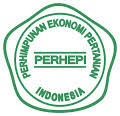POTENSI KEHILANGAN HASIL PANEN DAN PASCA PANEN JAGUNG DI KABUPATEN LAMPUNG SELATAN
DOI:
https://doi.org/10.25181/jofsa.v2i1.1110Abstract
Poor harvest and post harvest handling can reduce corn production in terms of quantity and quality. Therefore, this paper aims to know the potential loss of maize crops and post-harvest through the habits of farming cultivation in South Lampung, especially during the activities of harvesting, shelling, drying and storing. The results of the study showed that corn farmers understand the importance of harvest and post harvest handling in producing quality corn production. However, not all farmers put their understanding into practice even if the technology for harvesting and post-harvest activities have been invented and implemented by the ministry of agriculture. In order to increase the income of corn farmers, the socialization and demonstration of the use of the tools or technology specific to harvest and post harvest location needs to be enhanced.Keywords: loss, harvest, post harvest and cornDownloads
References
Brooker, D. B., Bakker-Arkema, F. W., & Hall, C. W. (1992). Drying and storage of grains and oilseeds. Springer Science & Business Media.
Bokusheva, R., Finger, R., Fischler, M., Berlin, R., MarÃn, Y., Pérez, F., & Paiz, F. (2012). Factors determining the adoption and impact of a postharvest storage technology. Food Security, 4(2), 279-293.
Champ, B. R., Highley, E., & Remenyi, J. V. (1987). Technological change in postharvest handling and transportation of grains in the humid tropics: proceeding of an.. (No. 338.160913 T255t). Canberra, AU: Australian Centre for International Agricultural Research.
Dharmaputra, O. S., Retnowatit, I., Purwadaria, H. K., & Sidik, M. (1996). Surveys on postharvest handling, Aspergillus flavus infection, and aflatoxin contamination of maize collected from farmers and traders. Mycotoxin contamination in grains, 38.
Firmansyah, I. U., Saenong, S., Abidin, B., Suarni, Y. S., Tandiabang, J., Wakman, W., ... & Suwardi, O. K. (2006). Proses pascapanen untuk menunjang perbaikan kualitas produk biji jagung berskala industry dan ekspor. Laporan Akhir. Balai Penelitian Tanaman Serealia, Pusat Penelitian dan Pengembangan Tanaman Pangan. Badan Penelitian dan Pengembangan Pertanian. Depatemen Pertanian, 57.
Fitriani. (2017). Climate Changing Impact on Rice Production. JoFSA, 1(1), 41–46. Retrieved from http://jurnal.polinela-srv.id/index.php/JOFSA/article/view/82
Handerson, S.M and R.L. Perry. (1982). Agricultural process engineering. Third edition. The AVI Publishing Company Inc., Westport Connecticut.
Kimatu, J. N., McConchie, R., Xie, X., & Nguluu, S. N. (2012). The significant role of post-harvest management in farm management, aflatoxin mitigation and food security in Sub-Saharan Africa. Greener Journal of Agricultural Sciences, 2(6), 279-288.
Prastowo, B., Sarasutha, I. G. P., Lando, T. M., Zubachtirodin, B. A., & Anasiru, R. H. (1998). Rekayasa teknologi mekanis untuk budi daya tanaman jagung dan upaya pascapanennya pada lahan tadah hujan. Jurnal Engineering Pertanian, 5(2), 39-62.
Suma, S.D. 2008. Teknologi pascapanen untuk peningkatan mutu jagung. Program Pascasarjana, Fakultas Teknik, Universitas Gadjah Mada, Yogyakarta.
Setyono, A., S. Nugraha, dan Sutrisno. 2008. Prinsip penanganan pascapanen padi. Dalam Padi: Introduksi Teknologi dan Ketahanan Pangan. Buku I. Balai Besar Penelitian Tanaman Padi, Sukamandi.
Tastra, I. K. (1996). Pemipil jagung “SENAPILâ€, komponen paket supra insus dan pemacu agroindustri dan agribisnis jagung di pedesaan lahan kering. Monograf Balitkabi, (1-1996).
Downloads
Published
How to Cite
Issue
Section
License
With the receipt of the article by the Journal of Food System and Agribusiness Editorial Board and the decision to be published, then the copyright regarding the article will be diverted to the Journal of Food System and Agribusiness.
Politeknik Negeri Lampung as the publisher of the Journal of Food System and Agribusiness holds the copyright regarding all the published articles in this journal.
Politeknik Negeri Lampung has the right to multiply and distribute the article and every author is not allowed to publish the same article that was published in this journal.
The manuscript authenticity and copyright statement submission can be downloaded ON THIS FORM. Fill out the form and submit as a supplementary file.
All publications by Journal of Food System and Agribusiness is licensed under a Creative Commons Attribution Non-Commercial 4.0 International License.
























